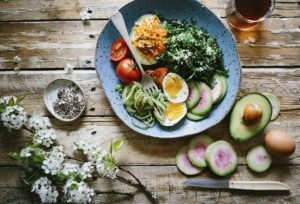
Decreased pain, decreased susceptibility to chronic disease, and increased energy levels, are some of the main reasons an anti-inflammatory diet is attractive. In Part I of this 3 part article, we’ll review what the anti-inflammatory diet is and its importance. Part II will cover guidelines for application. Finally, Part III will review the recommended additional nutritional supplementation.
The Anti-inflammatory Diet and its Importance:
Food, as we know it, has changed over time. We are exposed to many more food options today, which are made with added sugars, bad fats, additives, flavor-enhancers, and excess salts. They are foods designed in such a way as to overcome our built-in safeguards, such as eating only when we’re hungry. Instead, we have foods designed to keep us eating all the time. If all food options were healthy, we probably wouldn’t have to continually and consciously regulate ourselves to take in healthy food options. Therefore, it’s important to be selective, and to understand what our foods are doing to us.
To keep things simple, we can divide foods into Pro-inflammatory and Anti-inflammatory categories. For the most part, Pro-inflammatory foods are responsible for keeping your body at a subclinical, chronic grade of inflammation. This state of chronic, low-grade inflammation is correlated with chronic diseases such as:
When we look at the above, the goal is obvious. We want to live in a healthy, Anti-inflammatory state. An Anti-inflammatory diet allows us to do that. Inflammation is a normal response to injury. However, inflammation should be self-limiting. An exaggerated inflammatory response is mediated by our diets. Below, is a graphic dividing Pro-inflammatory and Anti-inflammatory foods:
In Part II of this article series, we’ll dive deeper into why these foods are Anti-inflammatory and introduce guidelines for implementing an Anti-inflammatory diet.
References:
“Obesity.” Harvard Public Health Magazine, 13 June 2017, www.hsph.harvard.edu/magazine/magazine_article/obesity/.
Seaman, David R. Clinical nutrition for pain, inflammmation, and tissue healing. NutrAnalysis, Inc., 1998.
©CenterForMusculoskeletalFunction2017







